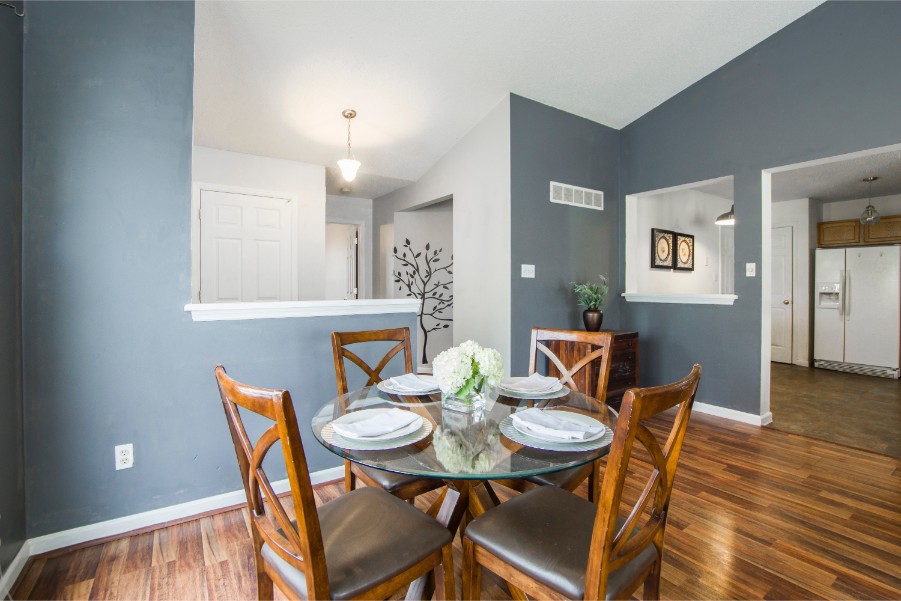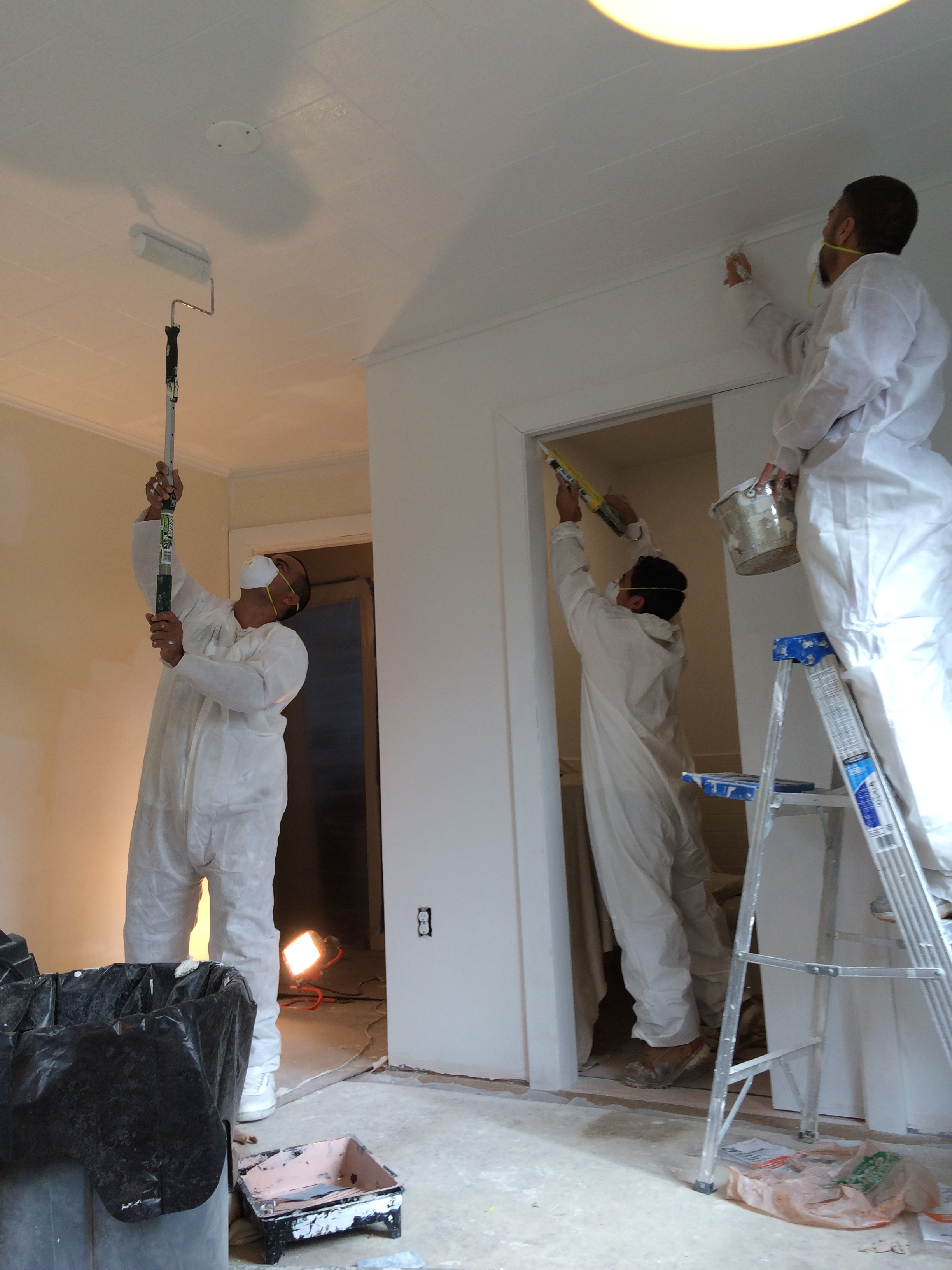Enhance Your Interior Decoration With Comprehensive Shade Consultation
The combination of shade appointment into interior style offers an unique chance to fine-tune and boost the visual and emotional resonance of an area. By involving with a skilled shade consultant, you can navigate the complexities of color choice, making certain that your selections not only complement architectural features but likewise resonate with personal style and mental effect. This calculated collaboration can dramatically affect the total ambience of your setting, cultivating a feeling of consistency and objective. Nonetheless, recognizing the subtleties of this procedure is crucial-- what key aspects should be considered to achieve optimal outcomes?
Benefits of Shade Examination

Moreover, color examination help in making the most of all-natural light and maximizing spatial assumption. Lighter hues can make a room appear more extensive, while darker tones produce an intimate setup. Cleveland Metro Painting Specialists. This critical application of shade can significantly influence the overall atmosphere of any type of interior area
Furthermore, expert specialists have a thorough understanding of classic standards and present patterns, making sure that the selected colors will stay appealing in time. This foresight can save customers from pricey redesigns in the future. Ultimately, shade examination equips clients by providing them with a clear vision and direction, cultivating self-confidence in their style options and eventually leading to a more effective and rewarding interior decoration end result.
Recognizing Color Psychology
The significance of shade psychology in interior decoration can not be overemphasized, as it explores the emotional and psychological impacts that different shades can stimulate in individuals. Colors can affect mood, behavior, and even productivity, making them a vital consideration in any type of design task.
As an example, cozy colors such as red, orange, and yellow are usually related to energy and warmth. They can boost feelings of exhilaration and comfort, making them ideal for social spaces like living kitchen areas or areas. On the other hand, trendy colors like blue, environment-friendly, and purple tend to evoke peace and serenity, making them excellent for bedrooms or reflection locations.
Additionally, using neutral tones can develop a balanced setting by allowing the bolder colors to attract attention without overwhelming the senses. Comprehending these emotional impacts enables designers to develop rooms that not only look aesthetically pleasing however additionally advertise emotional well-being.
Integrating color psychology right into indoor layout involves a thoughtful selection of shades customized to the designated feature of each room, inevitably enhancing the overall experience for its residents. This understanding is vital for attaining a unified and functional interior environment.
The Color Wheel Explained
Understanding the relationships between shades is vital for efficient interior style, and the color wheel serves as a valuable tool in this process. The shade wheel, created by Isaac Newton in the 17th century, highlights the range of colors organized in a circular format. It comprises primary shades-- red, blue, and yellow-- that can not be created by mixing other shades. Additional colors, created by combining primaries, consist of green, orange, and purple. Tertiary shades arise from blending a primary and an additional color, leading to tones such as turquoise and red-orange.
The color wheel aids designers comprehend the relationships between shades, consisting of complementary, similar, and triadic schemes. Corresponding colors, positioned contrary each other on the wheel, produce vivid contrasts that can stimulate a room.
Utilizing the color wheel in interior decoration not just boosts aesthetic charm yet also stimulates details emotions and environments, making it an essential referral for shade assessment. Comprehending these relationships ultimately encourages designers to create spaces that are both practical and aesthetically fascinating.
Choosing the Right Combination
Typically, choosing the appropriate combination is a definitive factor in attaining a successful interior decoration project. A well-chosen color scheme can link an area, improve its features, and stimulate preferred feelings. To start, consider the purpose of the room. Various spaces offer varied functions and require combinations that mirror their designated usage; for example, relaxing colors such as soft blues or environment-friendlies function well in bed rooms, advertising leisure.
Next, consider the natural light readily available. Light can drastically modify how shades appear, so it is necessary to assess the room at different times of the day. Furthermore, think about existing architectural components and home furnishings. An unified palette ought to match these functions, developing a natural look throughout the space.
When picking colors, make use of the 60-30-10 policy, which suggests that 60% of the area ought to be a leading color, 30% a second color, and 10% an accent shade. This ratio makes certain balance and visual passion (Cleveland Metro Painting Specialists). Finally, example colors on the wall surfaces before devoting, as Find Out More this enables you to see how the tones engage with one an additional and the general setting they create in your interior decoration project.
Dealing With a Shade Specialist

When working with a shade specialist, the procedure normally begins with a first examination. During this meeting, you'll discuss your vision, preferences, and the existing components in your space. The expert will assess your demands and might recommend specific shade schemes that straighten with your objectives.
After establishing an instructions, the specialist will certainly offer examples and aesthetic aids to assist you picture the recommended shade systems. This action is important, as shades can show up in different ways under differing lights conditions.
Additionally, a shade professional can direct you in choosing corresponding furnishings, art work, and accessories to integrate with your selected palette. By collaborating closely, you can accomplish a refined aesthetic that boosts your interiors and creates an inviting atmosphere. Inevitably, the competence of a shade consultant can substantially boost the total effect of your style project.
Final Thought
In recap, thorough color appointment works as a vital tool for improving interior design. By leveraging professional understanding of color psychology and spatial characteristics, a customized color palette can be developed to stimulate details emotions and develop a harmonious environment. This critical approach not only cultivates a cohesive design story yet likewise alleviates the danger of costly redesigns. Ultimately, involving with a shade professional ensures an informed and cosmetically pleasing outcome, elevating the click to read more overall experience of the room.
By involving with a skilled shade professional, you can browse the intricacies of color choice, ensuring that your choices not just enhance architectural functions however likewise reverberate with personal design and mental effect. It makes up primary colors-- red, blue, and yellow-- address that can not be developed by mixing other shades.The shade wheel aids designers understand the connections between shades, consisting of complementary, comparable, and triadic schemes.When selecting shades, make use of the 60-30-10 policy, which recommends that 60% of the space ought to be a dominant shade, 30% a second shade, and 10% an accent shade. By leveraging specialist knowledge of color psychology and spatial characteristics, a tailored color palette can be developed to stimulate certain emotions and develop a harmonious environment.